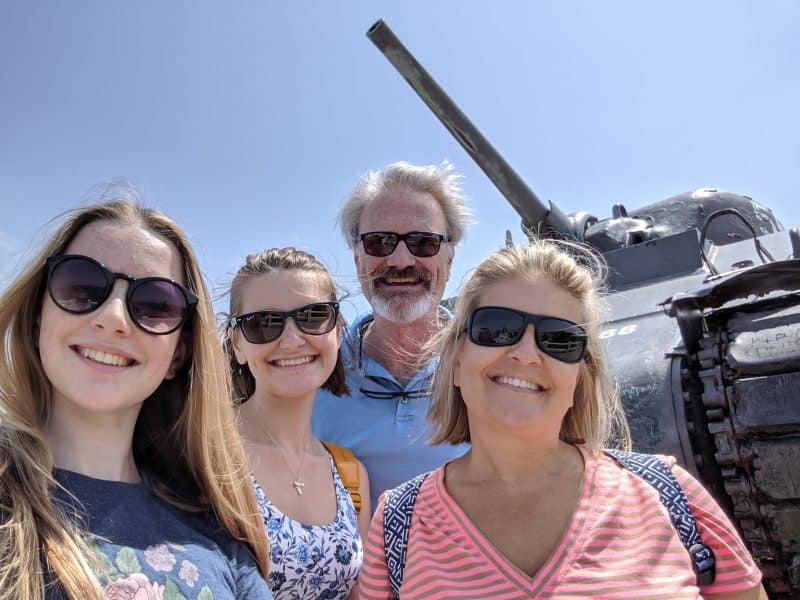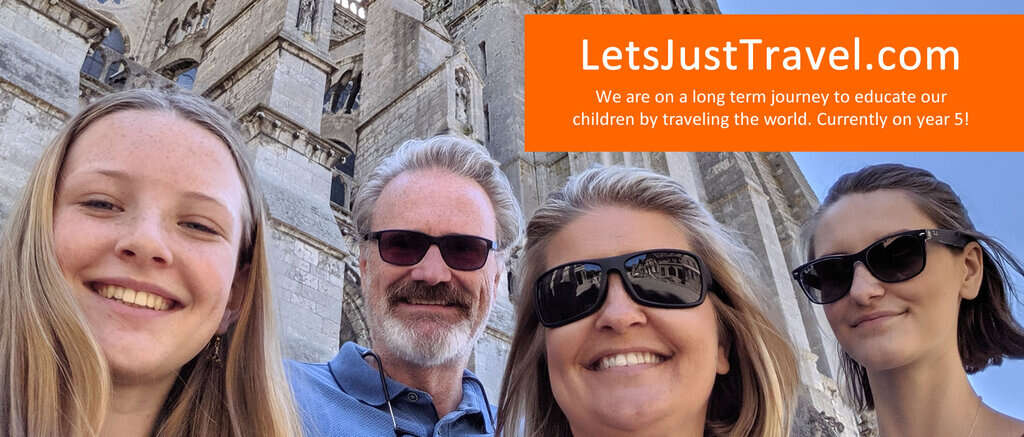Friends, I’m going to have to get all homeschooly-mom on y’all and tell you about the Beaches of Normandy and D-Day. Of course you probably know about it from some long-lost history class or maybe a show you stumbled across on The History Channel. But now that we’ve been there, I have to tell you more about it.
Just to make sure we are all on the same page, I’m referring to the decisive World War 2 strategic operation when Allied troops landed on the coast of France in order to drive back the Nazis into Germany in June 1944.
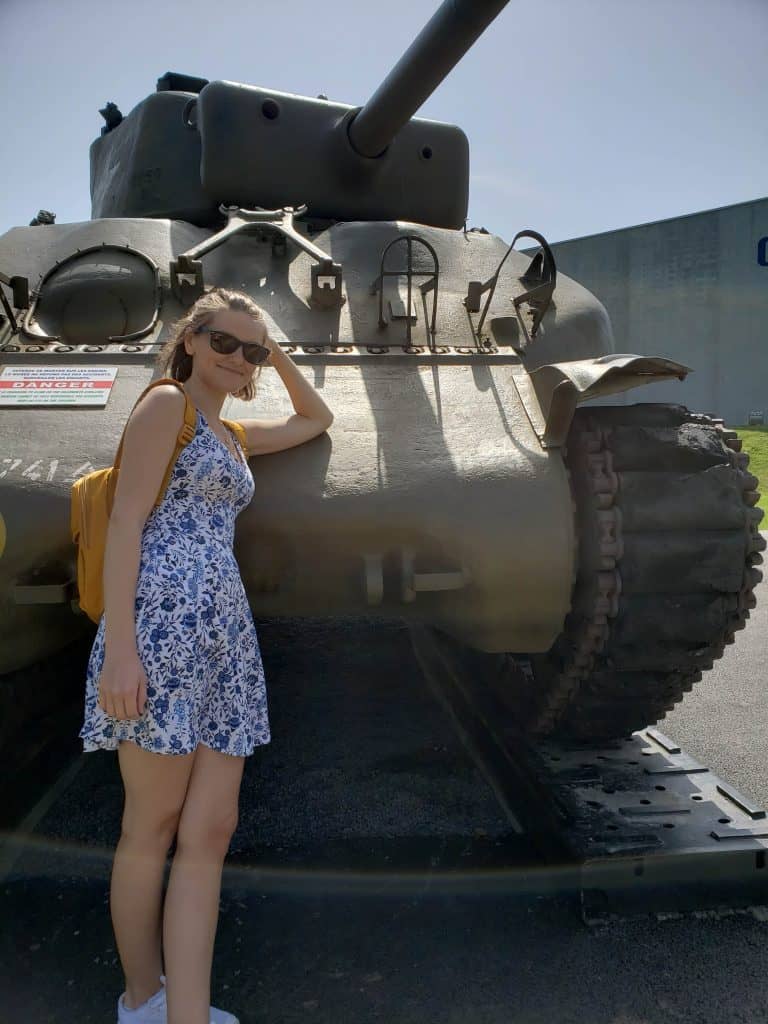
Operation Overlord
If you are like me, maybe you thought “Oh yeah, D-Day, that day when a bunch of soldiers landed on the beach, waded to shore and then defeated the Germans, and then WW2 ended. The End.” Well, I guess you could say it went like that. Kind of. But it was much, much, much more complicated.
I’m not going to go into the whole story, as much as I would like to, but suffice to say it was MESSY y’all. I would highly recommend this documentary to give you a much more detailed view of all that was going on.
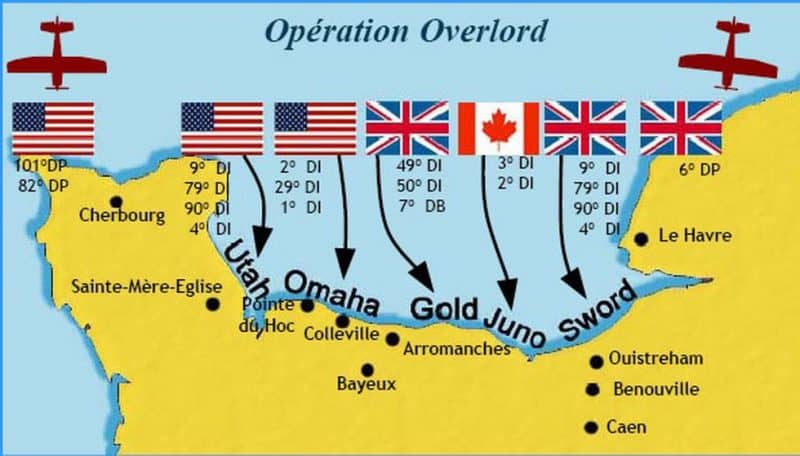
Operation Overlord involved paratroopers first being dropped behind enemy lines in order to destroy bridges and roads that provided enemy reinforcements and supplies. The second part (Operation Neptune) was the beach landing in 5 different areas. And then following that, you’ve got to support all those troops now working their way north through France.
We all have these images in our mind’s eye of soldiers taking a short boat ride from England, jumping out of their landing boats and wading in from shore with water up to mid-calf. But y’all, it was NOT THAT EASY. Here’s a few “did you know…?” items:
- The operation was delayed by a day due to bad weather so troops were forced to wait it out in their boats in massive waves.
- Many became seasick and their helmets were used as throw up buckets or to bail water out of their boats.
- Others had to exit out of boats early due to all the water coming in and were forced to swim to shore with all of their equipment. Many men drown before ever reaching the beach. Can you imagine swimming while wearing all that equipment?
- Depending on where they landed, the troops met with varying degrees of success/failure. The northern landings fared better and did not encounter much resistance from the Germans. The southern landings were much harder and the losses were great.
Mulberry Ports
I’m a logistics freak. I love logistics. I really should work for UPS or Fedex. So this is the part I want to highlight for you. How did the Allies get their stuff onto land? And it’s not just transporting the soldiers on that one day, but they needed continued supplies – and more troops – to support the ongoing operation. You can’t just pull a huge boat full of tanks and jeeps up to the beach. The tide and the depth of the bay wouldn’t permit it.
So, what to do? The Brits build caissons that were essentially like ports, that they then connected to roads that floated on top of the water, that led from the floating docks to the beach. This system worked great! This is really the best illustration of “necessity is the mother of invention”. This is true FSO (Figure Shit Out) and I’m so proud of these guys!
Maybe you need multiple layers of the same info, like me. Here’s a quote from our info packet from the museum at Gold Beach:
The Allies knew they would need a port in order to keep their forces adequately supplied, but after the fiasco of the Dieppe raid in August of 1942 it was obvious that German defenses were too good for them to capture a working port. For this reason, the decision was taken to build two prefabricated harbors from sections towed across the Channel. These were called Mulberries. Although work on Mulberry A at Omaha Beach was abandoned after it was destroyed by the violent storm of June 19-21, Mulberry B at Arromanches went on to play an undisputed role in the advance of Allied troops in Normandy.
I think it’s pretty cool how they literally had to tow these prefabricated structures across the channel to create a harbors for all the ships. But while towing them over from England, the bad weather caused them to lose 40% of what they had built. 40%!
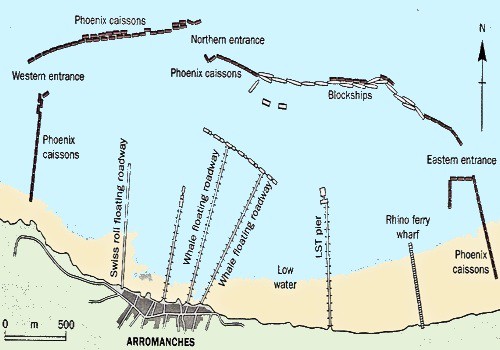
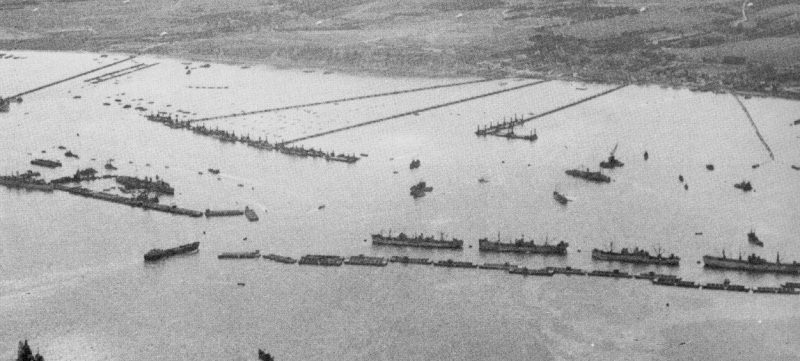
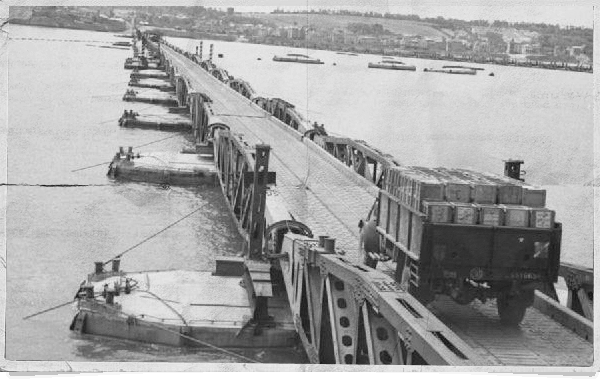
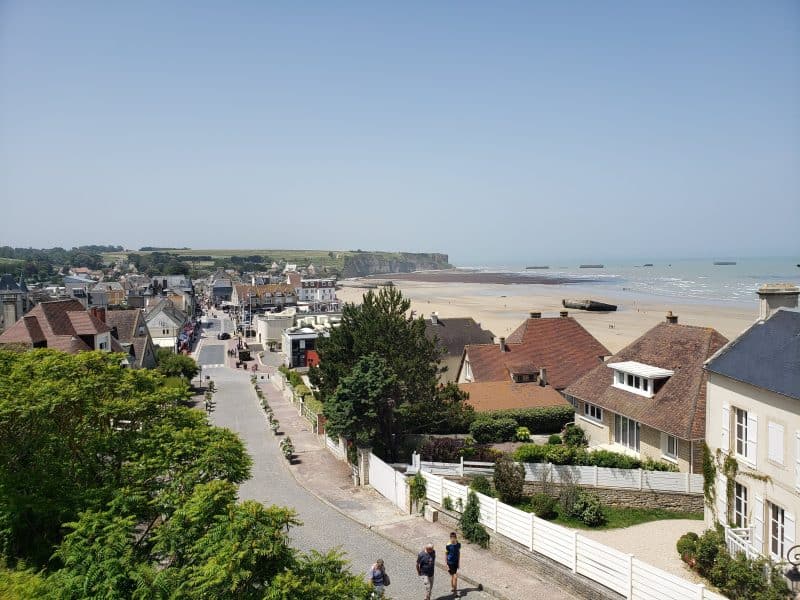
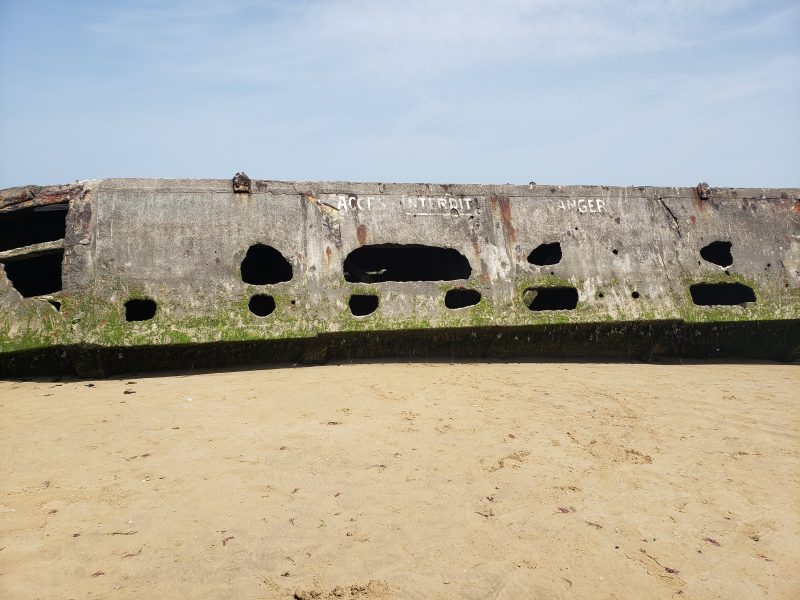
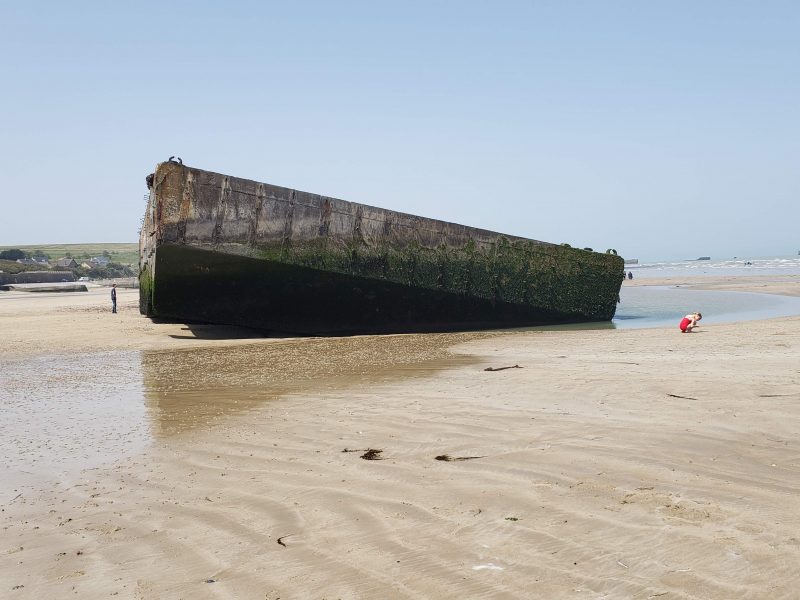
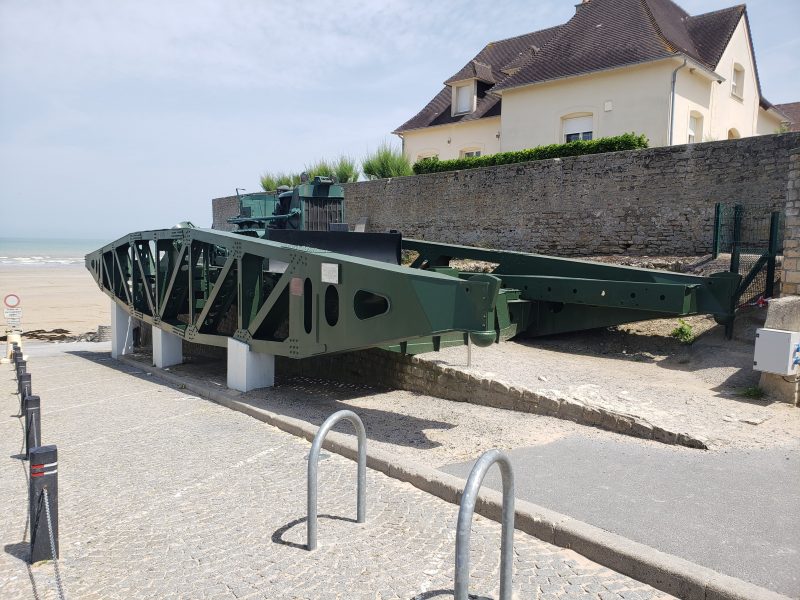
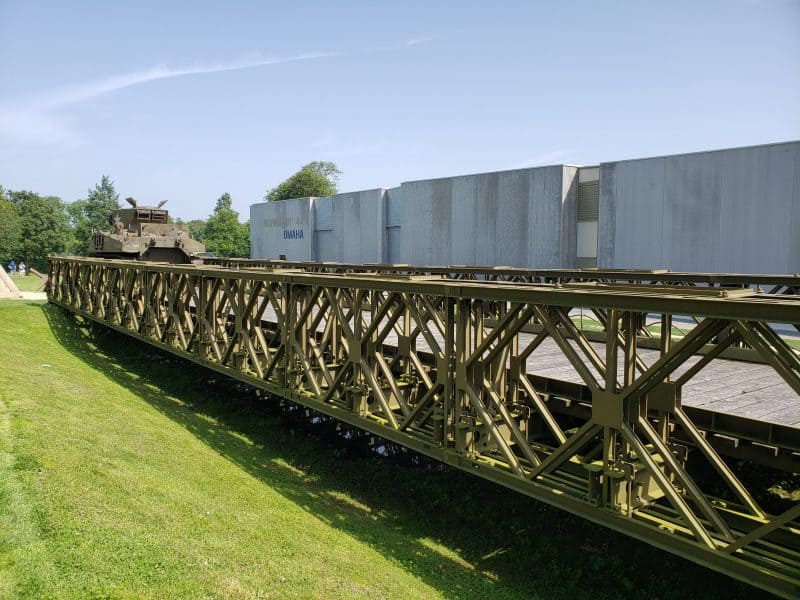
Roadside Memorials
As we drove south along the coastline from Arromanches, we would randomly run into memorials, plaques and markers commemorating part of the liberation of France. I could have spent a week exploring this area, it was so fascinating in a “happen up on it randomly” kind of way. There were also a LOT of museums and WW2 memorabilia shops. I could have stopped into every.single.one of them if the fam had allowed it. It was really cool to see the small towns, which looked completely unchanged since World War 2. And it was so easy to imagine what took place *right there*. The best kind of history lesson.
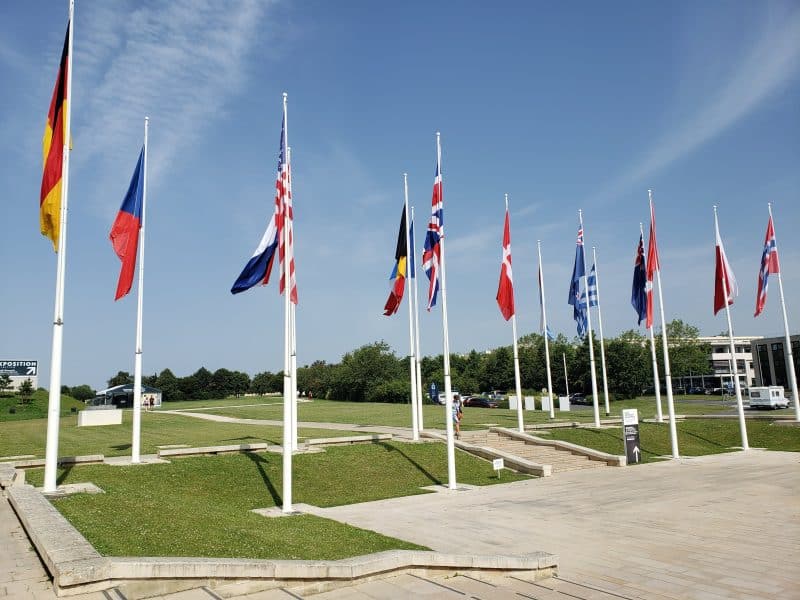
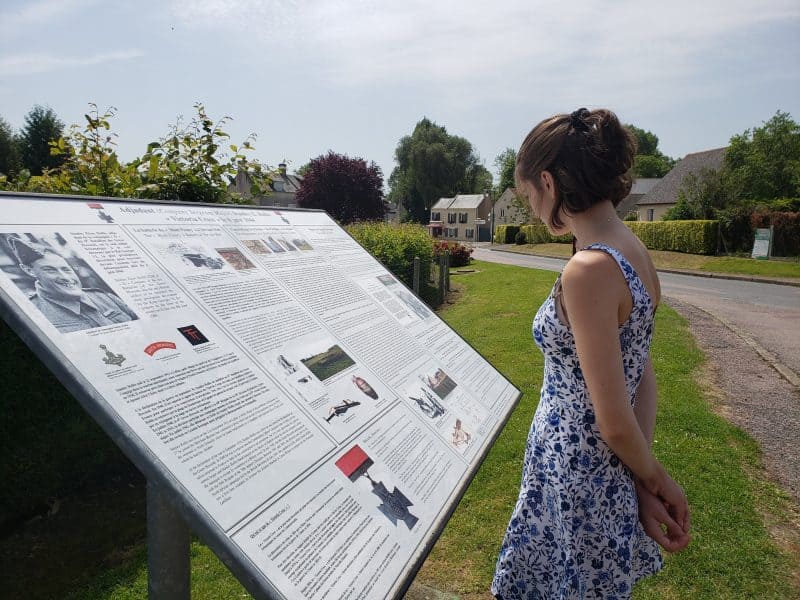
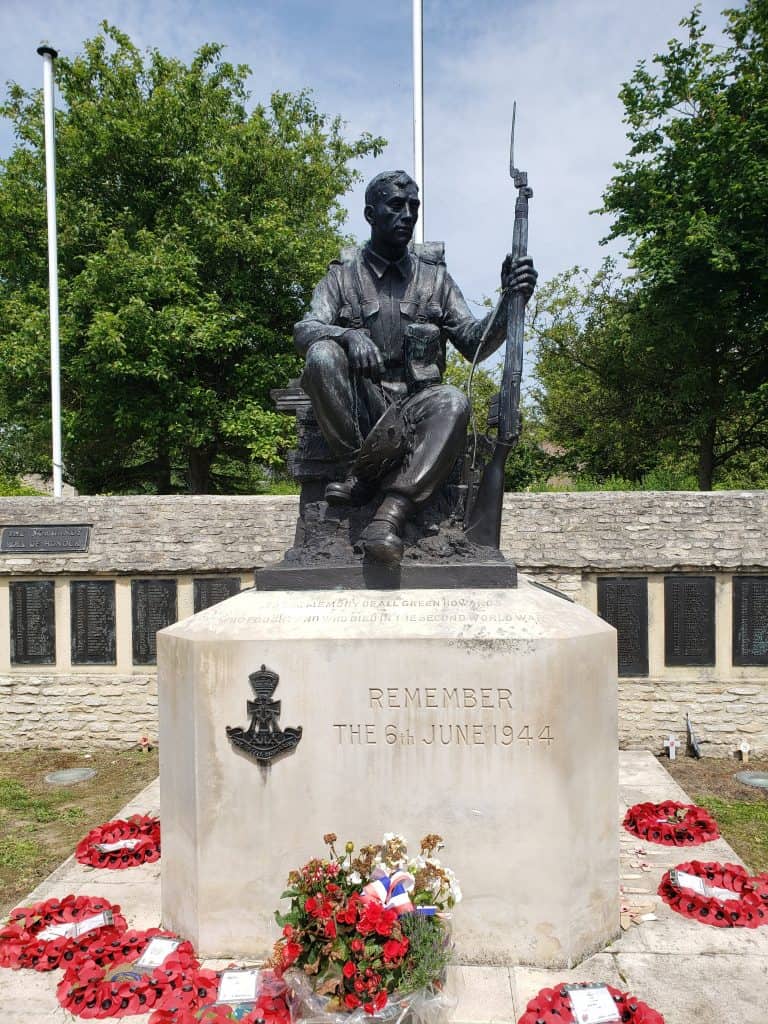
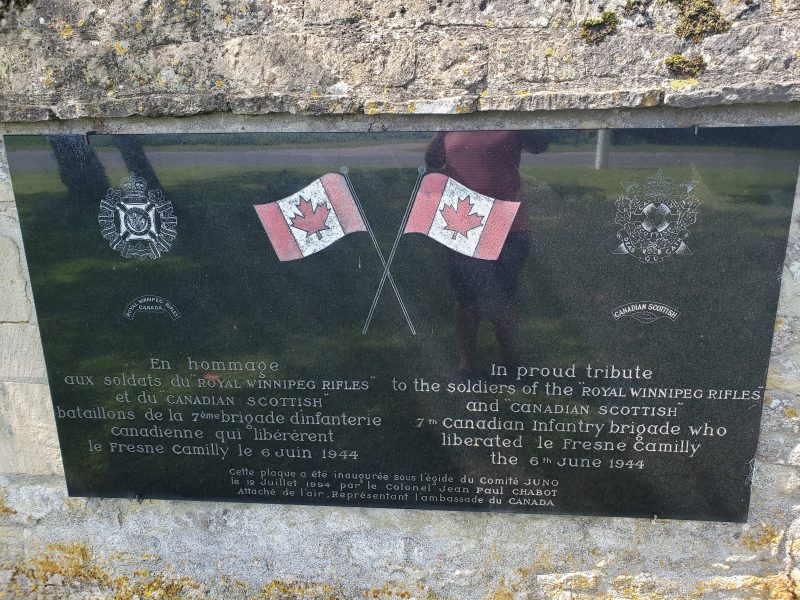
Omaha Beach
Then we went on to Omaha Beach and learned more about the American troops who landed there. There was not as much of a monument there and it seemed to be more of an adorable vacation town for the French, but it was still really significant.
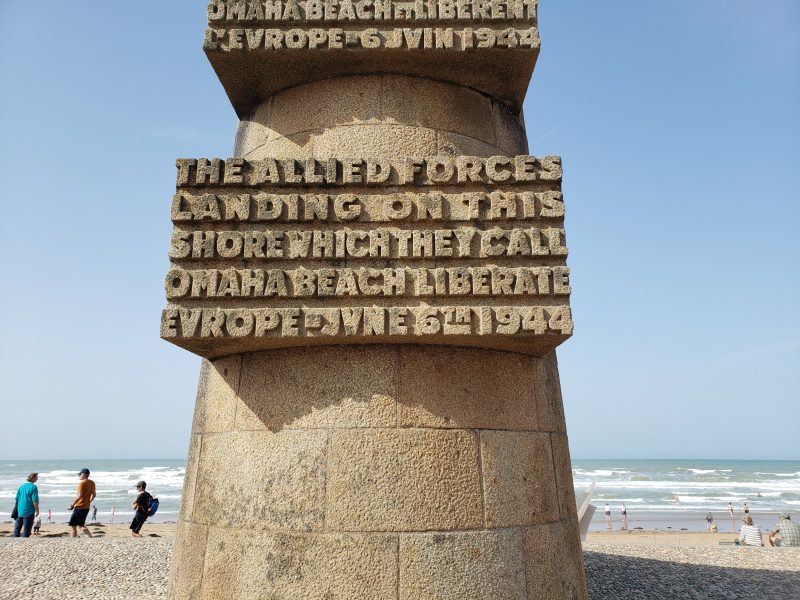
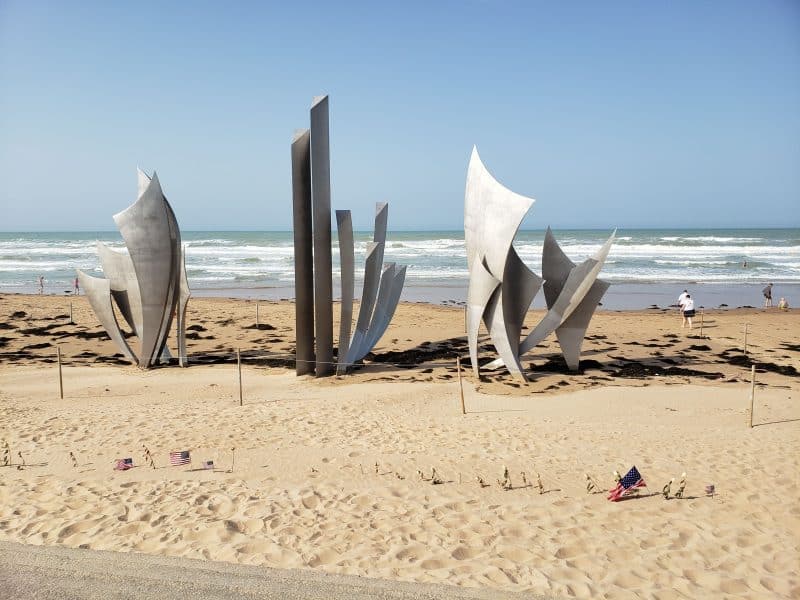
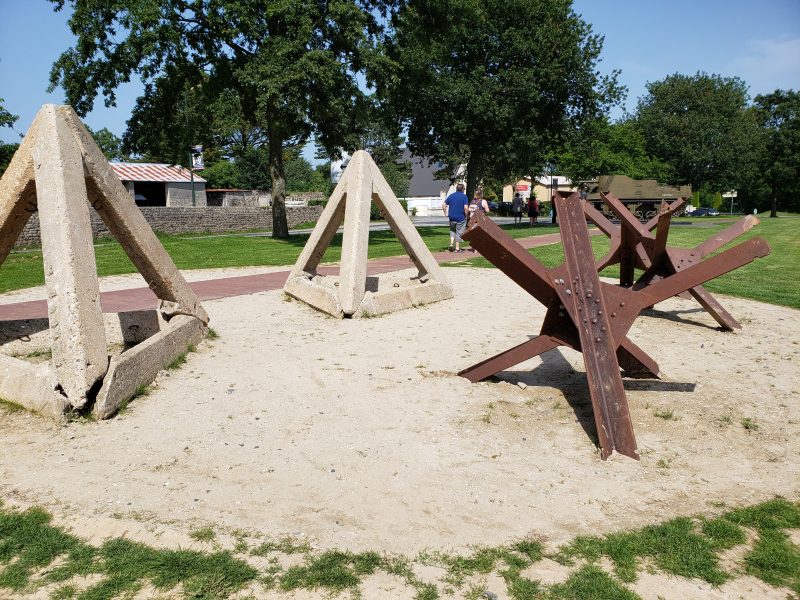
American Cemetery
And then we continued onto the American cemetery. Wow, this was incredible. It was so well done, from the meticulous care of the grass to the straight-as-an-arrow crosses. It was gorgeous. And it was so green and with so many trees, it felt so peaceful. And yet you could still hear the sound of the waves nearby. That was incredible.
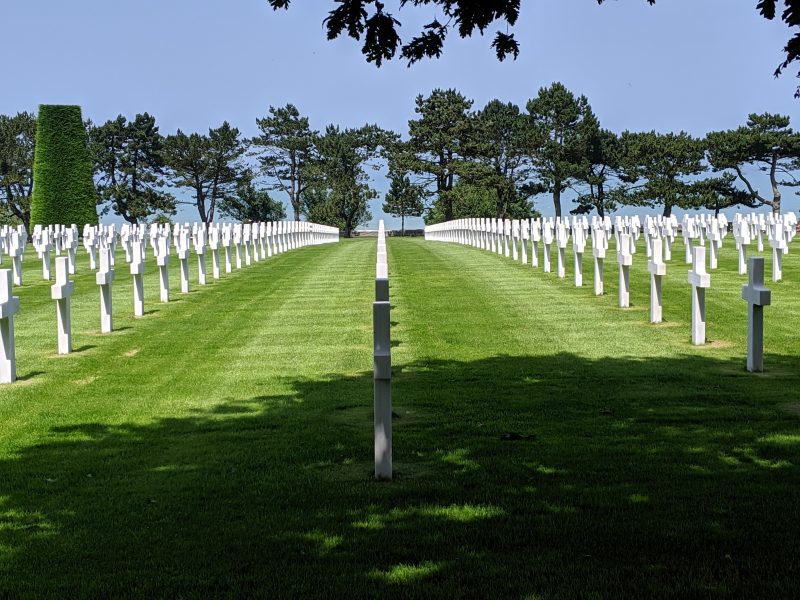
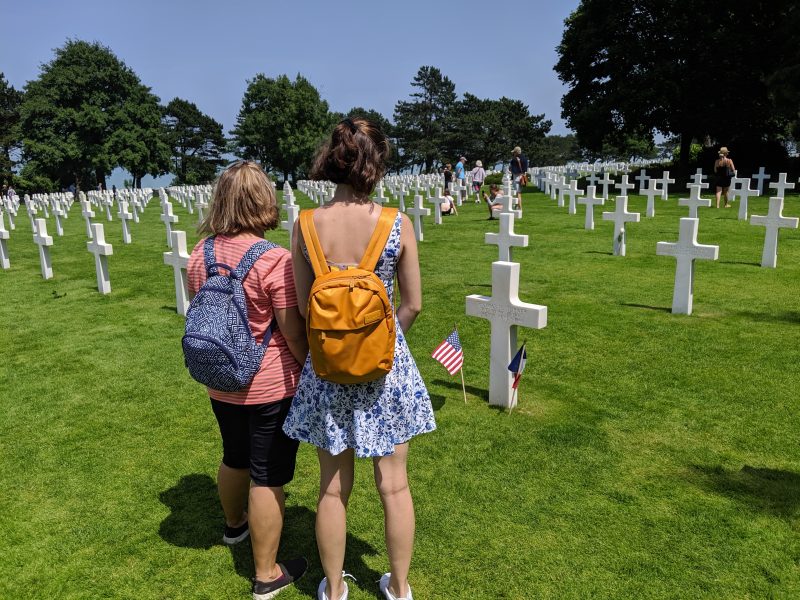
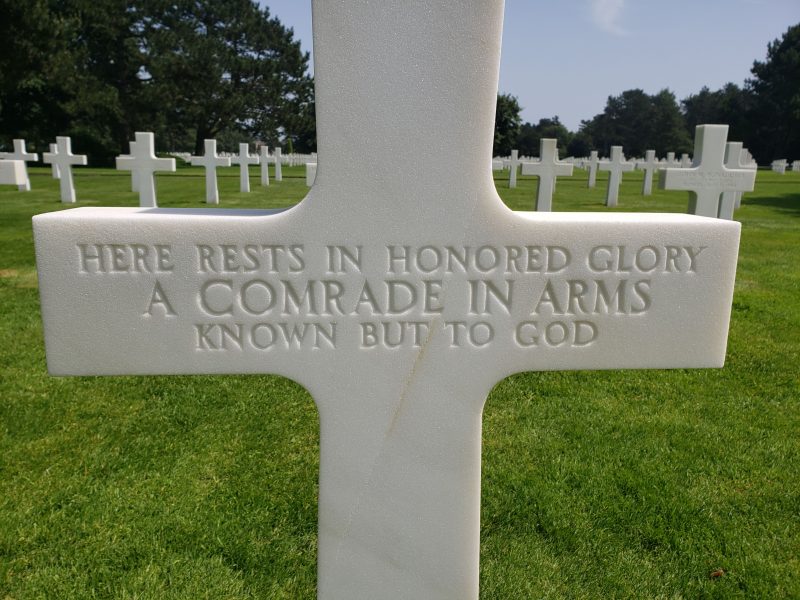
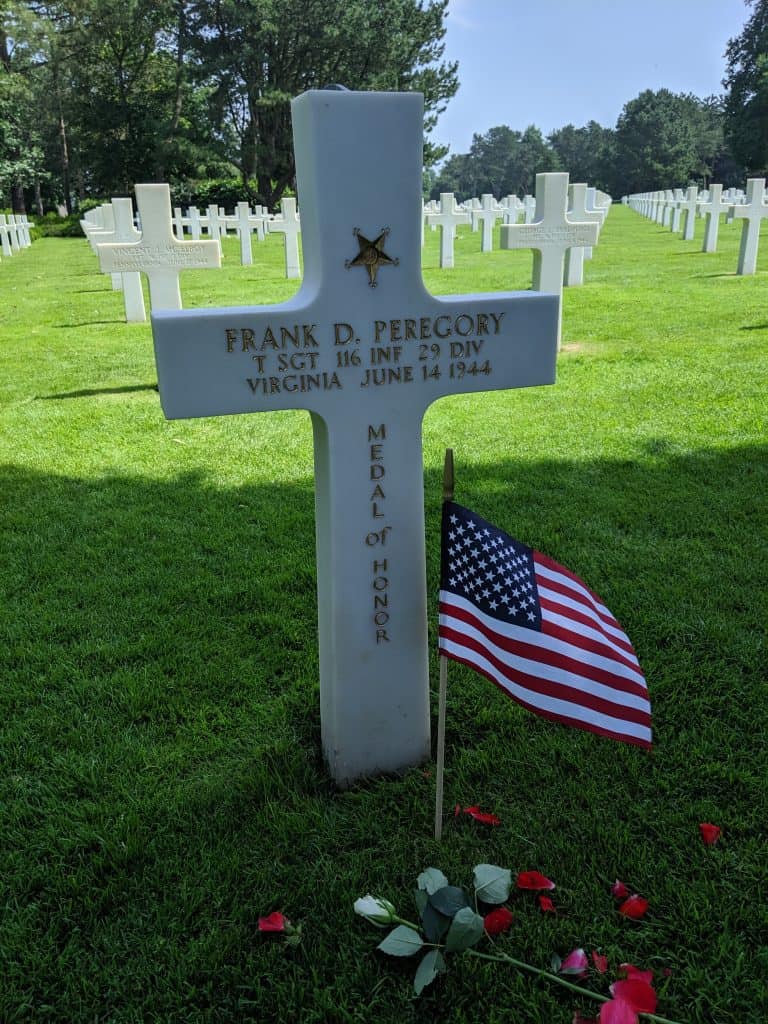
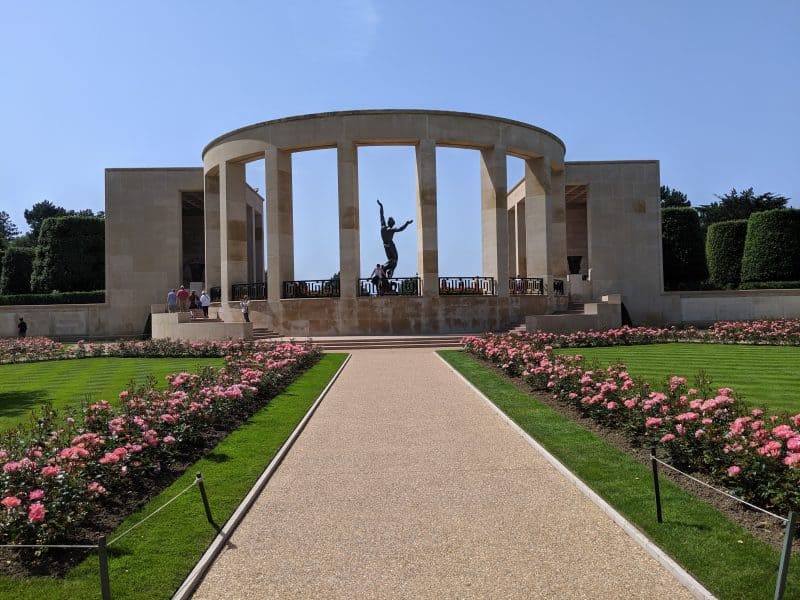
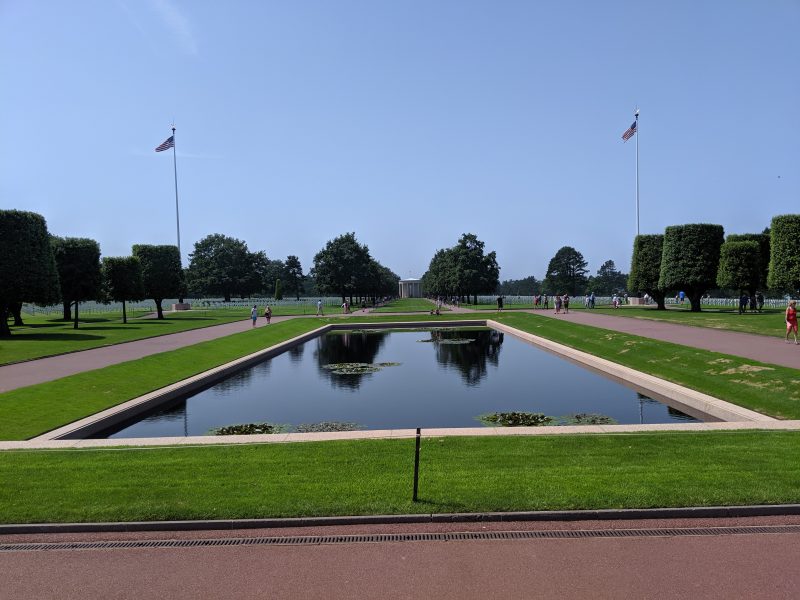
Pont de Hoc
We then continued to Pont de Hoc, where the Rangers landed and had to scale the massive cliffs, as there was no beach access. You cannot imagine their bravery when looking straight down the cliffs at the water below. And to know that the Germans were waiting for them at the top. Absolutely incredible. Thankfully, the Germans never anticipated that the boys from the cushy democracy of the USA (a tour guide’s interpretation) would be so brave, so their weapons were mostly pointed away from the ocean, thinking any attack they would suffer would be from land. Surprise!! The bravery exhibited by those men was unparalleled.

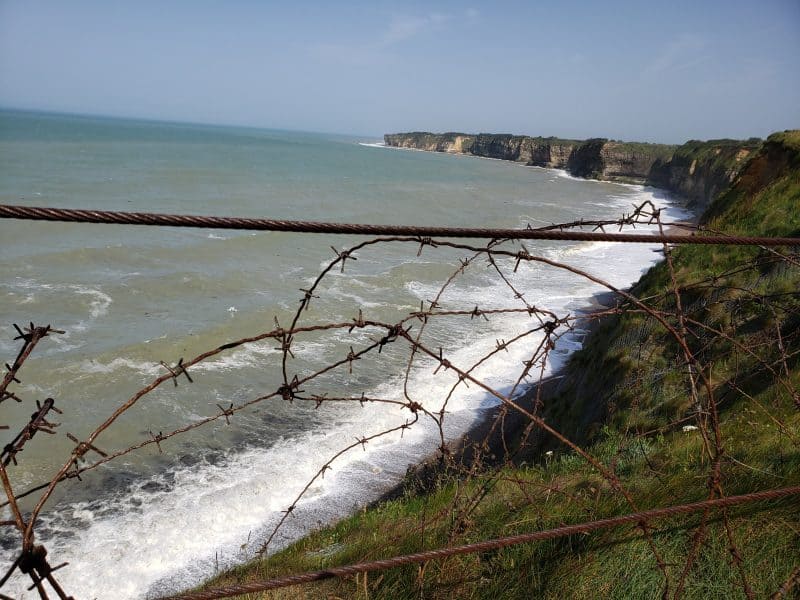

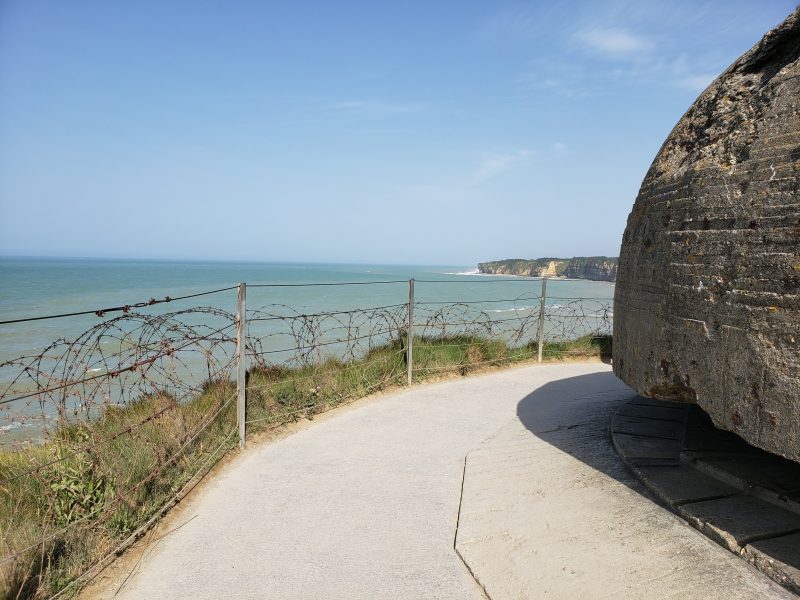
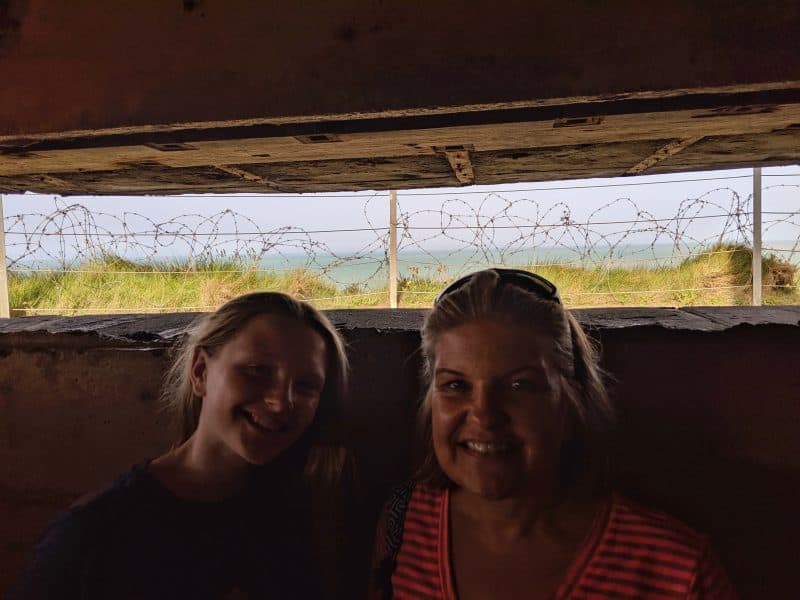
By this time in the day we were pretty tired. It was a 2.5 hour drive from our house, a lot of getting in and out of the car, reading plaques and monuments and trying to make sense of all that we were seeing. But it was an incredible day with great weather and an intense history lesson. We will always remember the day. Our day and D-Day.
